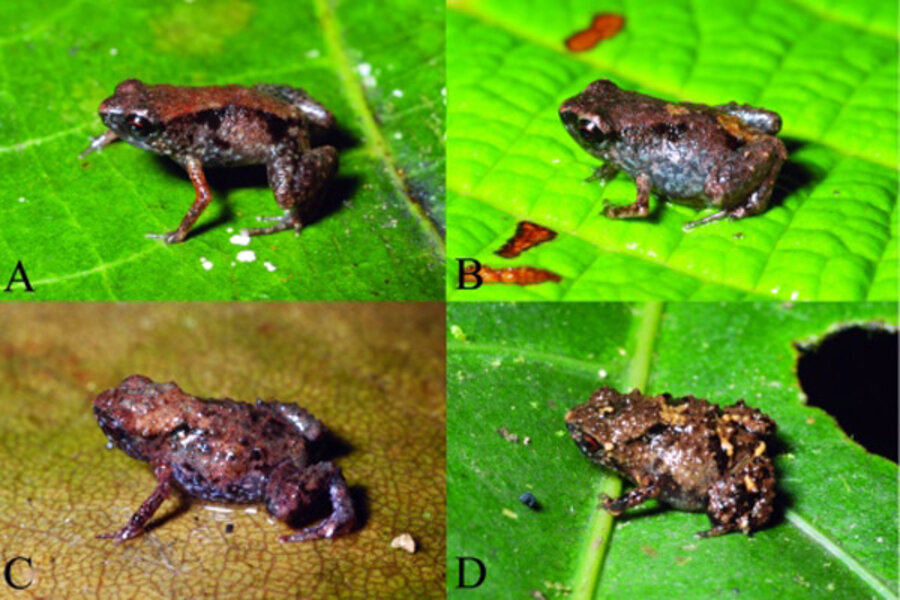Penny-sized frogs are world's smallest
Loading...
Smaller than a penny, two newly discovered frog species are considered the smallest ever found. The pipsqueaks live in Papua New Guinea and run about 0.4 inches (8-to-9 millimeters) in length.
The two species, Paedophrynedekot and Paedophryneverrucosa, are not only the smallest frogs ever discovered, they are also the smallest of a group of animals called tetrapods (four-legged animals with backbones). The duo rounds out the Paedophryne genus, which already contained two other, slightly larger, frog species first described in 2002.
The name P. dekot derives from the word for "very small" in the local language, Daga, noted study researcher Fred Kraus in the Dec. 12 issue of the journal ZooKeys; P. verrucosa was named from the Latin for "full of warts," due to its distinctively lumpy skin.
P. dekot inhabits the lower ranges, below about 4,000 feet (1,200 meters) of the western slope of Mt. Dayman, in Milne Bay Province, Papua New Guinea, and P. verrucosa lives on the southeastern slope of Mt. Suckling, near a region that joins Mt. Dayman.
"Miniaturization occurs in many frog genera around the world," Kraus, of the Bishop Museum in Hawaii, said in a statement. "New Guinea seems particularly well represented, with species in seven genera exhibiting the phenomenon. Although most frog genera have only a few diminutive representatives mixed among larger relatives, Paedophryne is unique in that all species are minute."
The frogs are so small they seem to have hit the lower limit of body size for frogs and toads, so it's unlikely that researchers will find anything much smaller. The frogs are brown or red-brown in color, with camouflaging flecks of brown and blackish triangles on their sides. P. verrucosa has lots of wartlike protrusions on its skin, along with some yellow splotches.
Because of their tiny size, their fingers and toes are too small to allow much climbing, so they have found a niche on the forest floor, where their tiny body size allows them to hide among leaf litter and moss. The author suggests they might eat tiny arthropods, such as mites.
They are so small that females of both species can only have two eggs, limiting their ability to reproduce. Most frogs have lots of eggs per litter, so this small number is very rare. They also lose moisture very quickly, restricting them to very wet tropical forests.
The four known Paedophryne species inhabit small ranges in the mountains of southeastern Papua New Guinea and its offshore islands. Until their DNA is analyzed, researchers can't be sure who their closest froggy relatives are.
Kraus recorded the call the male P. verrucosa uses to attract females, which he notes sounds like "a quick drag of a finger over a comb." It makes its calls at dusk until the sky turns dark, and also before dawn.
The study of these tiny frogs was published Dec. 12 in the journal ZooKeys
You can follow LiveScience staff writer Jennifer Welsh on Twitter @microbelover. Follow LiveScience for the latest in science news and discoveries on Twitter @livescience and on Facebook.





